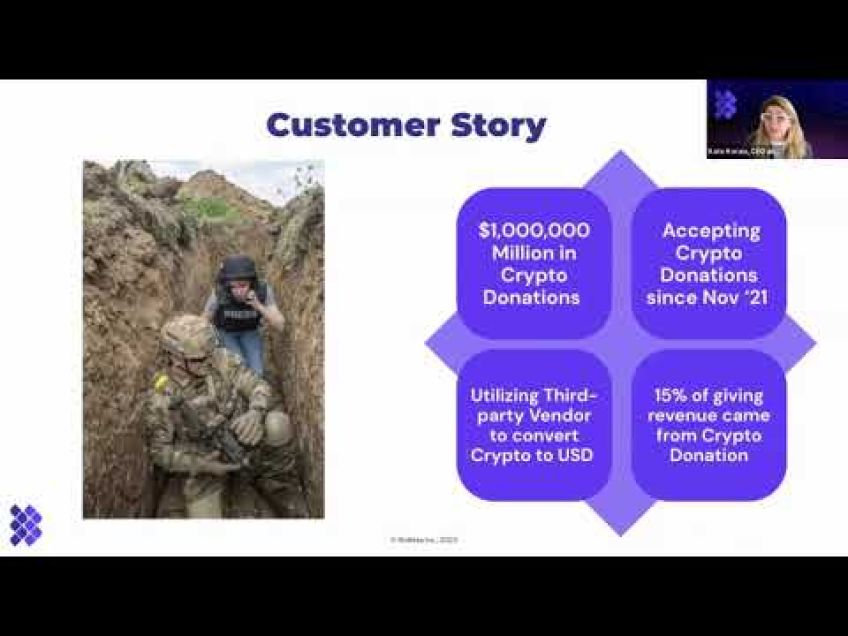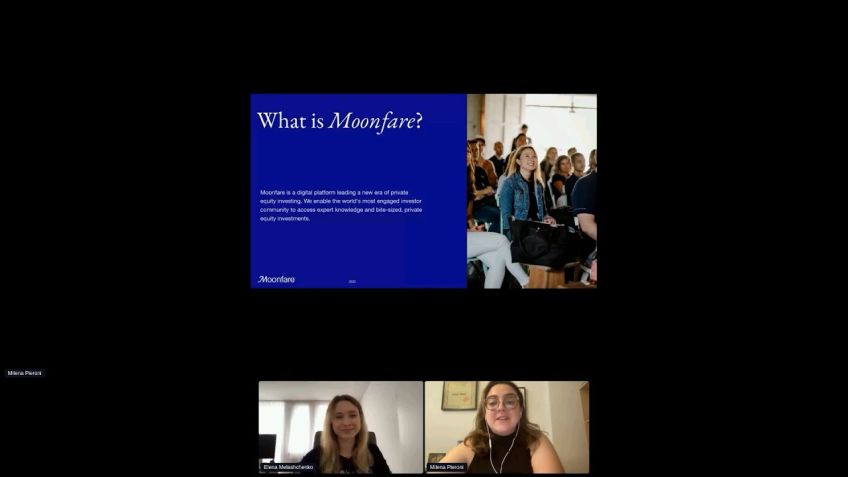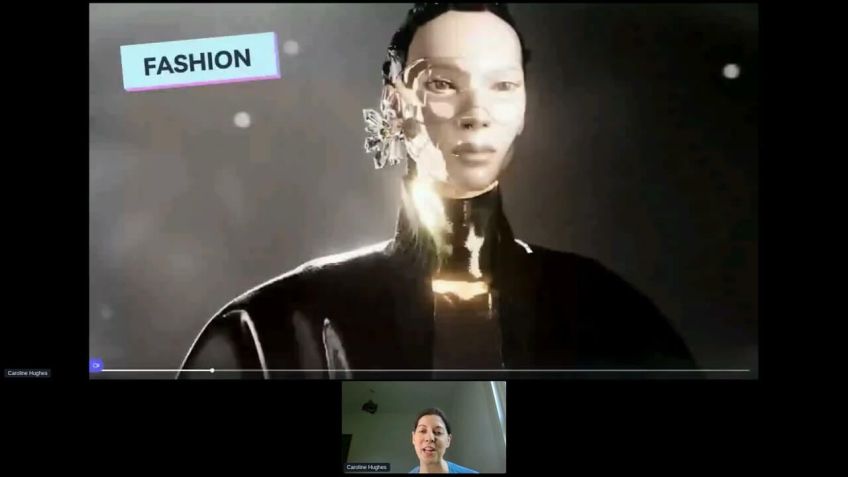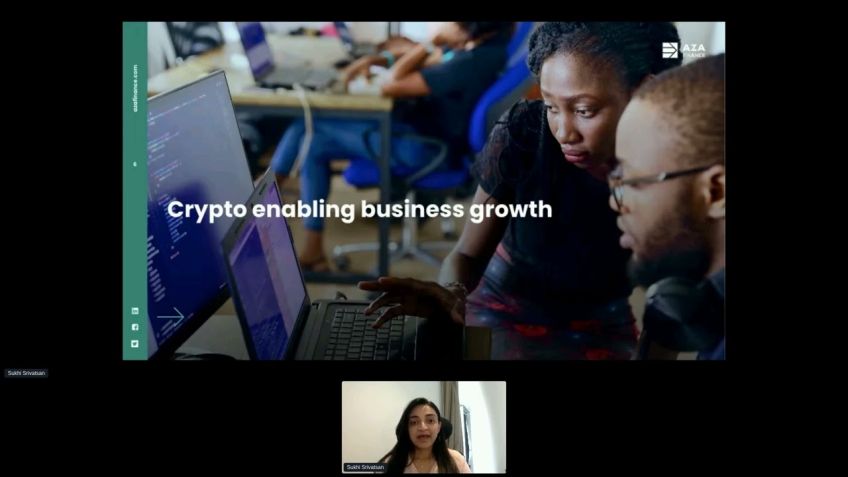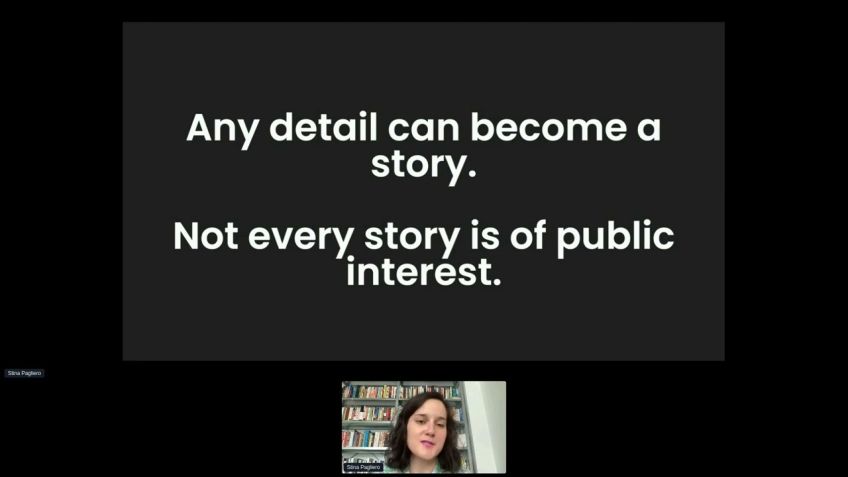Chilekwa Banda Fintech: what's in it for me?
Unlocking Power of Financial Inclusion through FinTech
Hello there, I'm Chilla Kanda, a committed member of the Association for Digital Financial Practitioners and the Information Communication Technology Association of Zambia. I come with 15 years of experience in fintech, mobile money, strategy, and client relationship management. Today, I am here to shed light on the crucial role of FinTech in bridging the financial inclusion gap and its potential impact on shared services. Let's dive in!
A Brief About Zambia and Its Digitalization Journey
Zambia, located in southern Africa, with a population of 18.9 million, is on the journey towards financial inclusion and digitalization. With seamless digital banking services, we're aiming to empower our population financially by the year 2025, as per the national financial inclusion strategy of the Bank of Zambia.
Understanding Financial Inclusion
Financial inclusion aims to deliver affordable financial services to underserved communities. This initiative tackles the challenges of low literacy levels, affordability, and security aspects. Thinking out of the box, I want you to think about this - to unlock the power of financial inclusion, one must walk a mile in the shoes of those who are financially excluded. Only then, we would be able to win.
The FinTech Revolution and its Impact on Financial Services Industry
The Rise of FinTech
Among the benefits of financial inclusion, one of the most notable ones is the rise of FinTech. COVID-19 has accelerated the adoption of digitization rapidly. The digital fintech space is continuously growing, leading to the evolution of new Fintech start-ups, fintech accelerator programs, and innovations in digital infrastructure.
Life Before and With Technology
Remember the times when we would meet over calls and settle payments in cash? Now, in a digitized era, we can easily transfer money with a click of a button. Despite technology's role, whether it's a product, service, or communication, the end-to-end process still requires efficiency, accuracy, security, and detailed instructions, just like before. It's the mode of payment that has seen a transformation, thanks to Fintech.
FinTech Collaborations - Disrupt or Be Disrupted
Innovation in FinTech is a continuous process. Its introduction to the financial service landscape has made service providers more customer-centric. They've started focusing on creating lasting impressions while offering unique solutions for customer problems.
FinTech has enabled a shared collaborative system that links all the players in the digital financial services ecosystem together. It has disrupted traditional bank transfers, replaced them with mobile money transfers, and brought everyone closer, much to the convenience of all involved.
- Mobile Network Operators: Ajax load moreButton text
- Small and Medium Enterprises (SMEs): offer their services and look for profit generation.
- Regulators: form the guidelines and rules protecting consumers from fraud and ensuring correct procedures are followed by service providers.
- Aggregators: connected with the Digital Financial Services Ecosystem, provide technology to enable collaboration with the other players.
- Banks: the traditional financial service providers are necessary for the overall finance maintenance and long-term strategy planning.
Who Benefits and How?
For Regulators
The use of FinTech ensures data integrity, consumer protection, and security. It helps them locate low-risk entities for collaboration.
For Banks
It aids in customer acquisition and reduces transaction times and operation cost.
For SMEs and Aggregators
It aids in automating processes, regulating taxes, providing easy-to-use services right from the comfort of consumers' homes.
For Consumers
It aids in accessing cost-effective, efficient services right from their homes.
Education, the Key Enabler
For effective utilization of FinTech services, education in using these products/services is crucial. Customers must find services easy to use and understand.
Wrap Up
Overall, FinTech brings efficiency and collaboration to the forefront in the financial services industry. It is all about making lives easier. You can reach out to me on Twitter, LinkedIn, WhatsApp, or Email for further queries.
Video Transcription
So my name is Chilla Kanda and I'm going to present a session on fintech and the key takeaways in this session are the impact of fintech in bridging the financial inclusion gap uh is shared services.The answer, what does this mean organization leading the shared space, what it means for the end user and what is the missing link? I'm from Zambia and I am a digital financial services practitioner. I am a member of the Association for Digital Financial Practitioners in Zambia and also for the Information Communication Technology Association of Zambia. I have experience in mobile money in uh fintech in strategy, uh client relationship management. And I am a mother, I've worked in uh telecoms in uh banks, supporting digital banking uh services. And I've also worked in in the fintech. Uh and my experience in the digital financial services is 15 years. I'll give you a little bit uh of uh background or from where I'm coming from. So Zambia is a country in the southern Africa. If you see right there with the green, that's where Zambia is and that's our flag and um our population is 18.9 million and our tourist attraction. Uh The famous Victoria Force that uh gets its source from the Zambezi river, which is in the picture here.
I'll get into our discussion of the day which is uh fintech. But before I begin, I would like to just share my uh views on financial inclusion. Now, what is financial inclusion? Financial inclusion is basically the ability to deliver financial services and the provision of financial services to those who are disadvantaged. And it is also considered to be the ability to deliver low cost financial services to the unbanked or underserved communities. What are some of the main challenges of financial inclusion with financial inclusion? You find most of the challenges are around education with the low literacy levels. And then uh the discussion around uh having a valid ID uh absence of ID um is is, is large, especially in, in the rural communities because not everybody uh gets a chance to obtain uh a national ID and then in security, we regarding um the specific areas that I have mentioned, you find most financial service providers do not want to, to take their products to the rural areas because of security and then also affordability.
Uh The high fees and tariffs uh seem to be a negative impact on, on financial inclusion, especially for the underserved communities that do not see the need to, to be financially included and would rather keep their money, let's say under example, the main benefits of financial inclusion.
Uh Obviously that uh it probs many uh it, it solves many problems for the current uh status quo, which means it provides solutions for the underserved communities. Um For example, here in Zambia, uh the Central Bank of Zambia, which is known as the Bank of Zambia has a national financial inclusion strategy to ensure that we have um at least 65% of uh rural and urban population uh financially included by 2025. And then we also look around um the emerging uh fan uh the increase in income streams, which is basically having um uh a way of of saving uh for future emergencies. And then um the other main benefits of financial inclusion are that it reduces poverty in that it enables um uh communities, especially the underserved communities. In this case, uh bring up entrepreneurs when we talk of agents, uh mobile money agents. This is one of the, the benefits of financial inclusion. Um It, it helps um um um entrepreneurs uh with, with jobs and then it's also a source of income for families. And then affordability is one of the greatest benefits which uh in which uh means that um if you are able to provide services that are affordable, you will then be able to tap into the uh the underserved communities that uh have challenges.
Uh and uh and, and are not financially included. One of my favorite quotes which I I came up with is I believe, to unlock the power of financial inclusion. One must walk a mile in the shoes of those who are financially excluded. And only then will we win? Now, we know the data is there? The numbers definitely don't lie. If you look at uh our current situation, what um the global pandemic did was it enabled uh an environment for the unbalanced population to actually uh become banked. And if you look at uh on, on my right here, there's um the mobile money uh in 2019, this is uh uh an excerpt from um the UN CD F and GS Ma um um state of the industry report uh global and for Zambia. So if you look at the bottom left where I compare the DFS, the digital financial services situation in Zambia, there's the, the global outlook, you'll find that one thing that is in common is that the fintech space is growing, right? Uh In Zambia, this was a 2019 data. We had about 25 fintech and now we have over 38 fintech coming up every month uh especially with the introduction of these Fintech accelerator programs. Now, COVID-19 has also use of technology. What this means is that um more organizations or payment service providers are investing in digital infrastructure.
So you have the mobile network operators that have increased their capacity, their network capacity. You have the payment service providers that are coming up with different solutions to engage with their consumers. Um You have the sme s the small medium enterprises that are trying to find ways in which they can um uh make more money uh by leveraging on the different uh businesses, whether it's a value-added service like bill payments or mobile money transfer or having your insurance company um providing um services to, to the underserved communities through the mobile money agents.
And then we also have fintech uh to provide the solutions for the banks, uh the mobile network operators and the financial service providers. Now, when we talk of the use of ID, it was during uh the first wave of COVID uh 2020 that we discovered that this not only affects um developed uh developing countries, but it also affects developed uh developing countries. Um Is it really a time when you need your ID to set up your, your mobile wallet? For instance, when you need to register for um an online service, do you need your ID? We were all working from home, everyone still needed to use um to use cash at some, some point. But uh do we really need uh the use of a physical ID and to what cost? So we'll see more of this as we go into what uh technology looks like. So life before technology and I want you to picture this um if you look back uh 1520 years ago when you are communicating, all you needed to do is let somebody know where you're going to meet them. So the scenario would look like this.
I will meet you at 5 p.m. and I will be wearing a blue pair of khaki pants with a white T shirt. Please make sure you carry a backpack. I will have all the cash on me. So let us meet by the entrance of the supermarket. So imagine this is a dialogue between two people that are using land phones and not cell phones. And so they needed to be a efficient, they needed to get accurate information, the instructions needed to be detailed. And the rules were that uh this person needs to carry a backpack. The mode of payment was cash. And so um the security aspect of this pops in and they were going to meet at the entrance of the supermarket where there are people around and the last now is the transaction has occurred. And now life with technology shows us the same mechanism except we are using technology. So I will send the transfer this afternoon, send me your bank details or alternatively I will e wallet, text me your number. I have included the withdrawal fee. So you will receive the entire amount you can withdraw from any booth or the nearest ATM life with technology and life before technology still has the same process, the product or service or communication or mode of payment will still follow the same process highlighted here there has to be efficient information, there has to be speed, there has to be accuracy in the information and in the service being provided, there has to be detailed instructions, there are rules that govern this transaction.
There's a mode of payment, there's security and there's the handshake. Now, what are the benefits uh that Fintech brings to the financial services industry when we talk about collaboration, disrupt or be disrupted. Fintech is not going anywhere just like we didn't have um means to transfer our funds before we we were using cash technology evolved and now we're using mobile money, we're using bank transfers. What about Fintech? What is it doing for the digital financial services ecosystem?
Fintech enabled financial service providers to get closer to the customer? Now, more than ever, the financial service provider can get closer to the customer. They allow service providers to be more useful and offer solutions to customers that will leave a lasting impression.
There's a saying that goes um you learn more from your most unhappy customer. This is true and we're going to see why this is very important. You see the introduction of a shared collaborative system will will require all the players in this digital financial services um um ecosystem to come together. And this is where the collaboration comes in. This is where the shared services space comes in. So we talk of innovation, innovation is doing the same things a bit better, right? And then we move from the innovation to doing new things. We're still coming up with new things, new products, new services. But then what is that missing link? We get to the disruption phase.
We're making things that make the old things obsolete. This is where Fintech comes in. We have the mobile network operators, we have the regulation and we have the banks. So these three are key to ensuring that um Fintech uh brings in uh interoperability, which is the collaboration in this case. So the mobile network operators, we know that they are good at um providing us with connectivity, which is the connection to the networks and they also give us access to the markets and then they also hold the subscriber database. I I know not of any one person that is not registered with the mobile network operator. So they are key in this uh whether it is the banks, whether it is the sme s, whether it's the regulator, whether it's the aggregator, we need the mobile network operator because they have the subscriber database. And then we look at the sme s the small medium enterprises could be your merchants, it could be your insurance company, your microfinance company, et cetera.
These uh offer services, value-added services, sorry, they offer services uh products that uh the consumer needs and all they're interested in is making profit, their short term uh profit requires that they make money now. And then we have the regulator, the regulator. In this case, could be the central bank, it could be your revenue authority, it could be your consumer protection authority. These have rules, they govern the rules that ensure that this digital financial services ecosystem are doing the right thing. And they're also protecting the consumer from being defrauded by the uh the payment service providers. And then the regulators are also the policymakers. Now we also talk of the aggregators. The aggregators are the ones that ensure that the technology is there that is enabling the mobile network operators, the SME S and the regulators to work together to be able to provide value added services such as your bill payments, your money transfer from wallet to bank and so on and so forth.
And they're simply the linkage with this digital financial services ecosystem. And then we have the banks without the banks. There's no finance, right? The first financial service provider we all came to know was the bank and the banks have processes, but their processes usually have long term goals attached to, to, to them. They don't look at them. Now like SME S uh SME S do for the banks, it's for the future. What's our long term strategy? So you might be asking what's in it for me. And this is the biggest question for the regulators having a fintech and bringing in the shared services space means that there will be integrity with the way um the uh payment service providers are providing services to the customer and the consumers are protected. And then also the regulators want to ensure that there's security and they're always looking to partner with the, the, the the entity that is risk averse because uh for these products to, to work, there's a lot of risk that that is associated with, with um technology covered.
And then we look at the banks whose sole purpose is to the transactions, reduce transaction time and obviously reduce the cost of operations. But their main goal is to gain more customers because they need deposits to survive. And then the aggregator uh requires that they uh have their, their um entities that are uh receiving the technology capabilities, the value added services and the consumer just needs to be able to use those services and buy everything from the comfort of their home. Uh But the technology should work and then we have your insurance and microfinance and the SME S in one we say automation of processes uh is very key in this um in this process and the loan facilities and premium collections. And then we also have inventory which is all automated. And an example of that would be the regulation of taxes. And then for the consumer lastly, all they want is a cost effective value for money efficient product or service. In summary, we're saying fintech bring in uh a different aspect altogether. They make us efficient. But what is key in this collaboration is education. If you can't explain it to a two year old, you don't understand it. Well, enough services and products should be easy to understand.
Um an interface should be easy to use for the customer automation. All the customer wants is to get things done. So getting things done means you get things done with ease efficiency and increased productivity. And then customer uh uh the customer is key. So customer service requires that you build the right products, you build products uh that the customer needs versus what they want. And then collaboration is after all the name of the game, we are all after the same customer. So why not make their life easier? This is the end of my session. You're free to reach me on Twitter, on linkedin or whatsapp or email.

